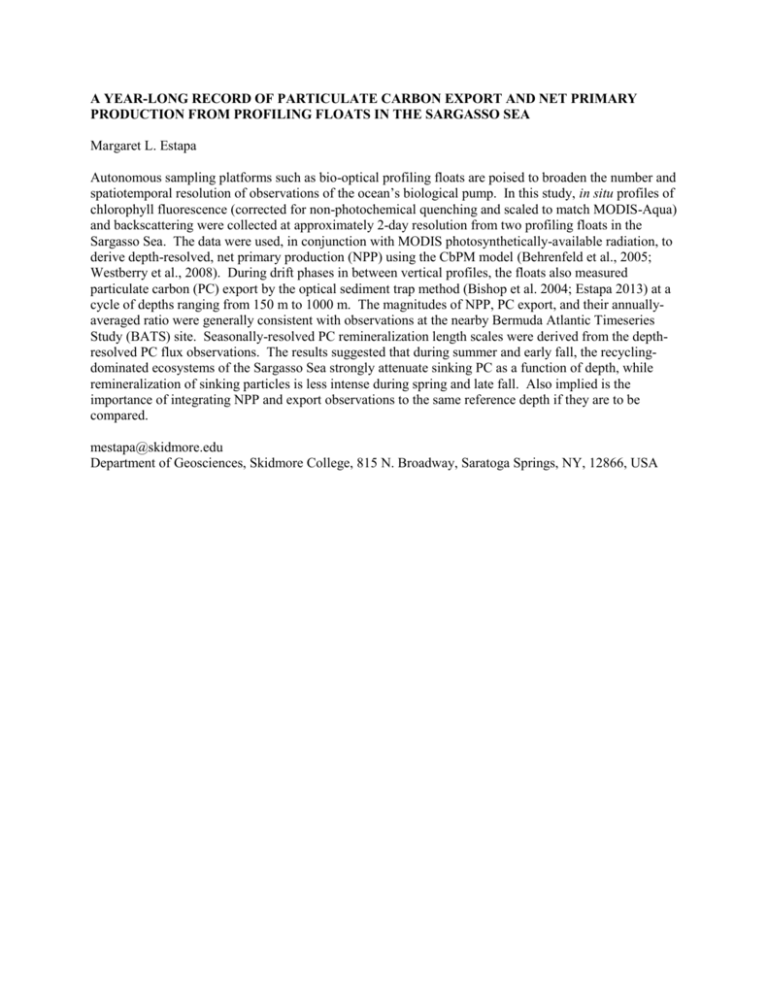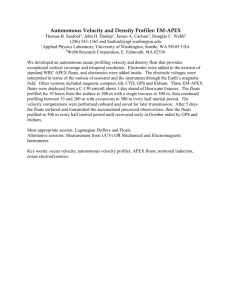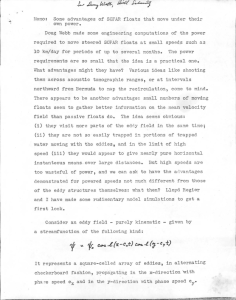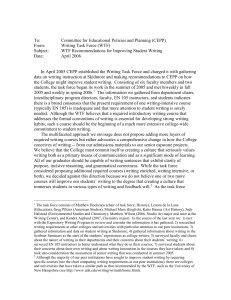A Year-Long Record of Particulate Carbon Export And Net Primary
advertisement

A YEAR-LONG RECORD OF PARTICULATE CARBON EXPORT AND NET PRIMARY PRODUCTION FROM PROFILING FLOATS IN THE SARGASSO SEA Margaret L. Estapa Autonomous sampling platforms such as bio-optical profiling floats are poised to broaden the number and spatiotemporal resolution of observations of the ocean’s biological pump. In this study, in situ profiles of chlorophyll fluorescence (corrected for non-photochemical quenching and scaled to match MODIS-Aqua) and backscattering were collected at approximately 2-day resolution from two profiling floats in the Sargasso Sea. The data were used, in conjunction with MODIS photosynthetically-available radiation, to derive depth-resolved, net primary production (NPP) using the CbPM model (Behrenfeld et al., 2005; Westberry et al., 2008). During drift phases in between vertical profiles, the floats also measured particulate carbon (PC) export by the optical sediment trap method (Bishop et al. 2004; Estapa 2013) at a cycle of depths ranging from 150 m to 1000 m. The magnitudes of NPP, PC export, and their annuallyaveraged ratio were generally consistent with observations at the nearby Bermuda Atlantic Timeseries Study (BATS) site. Seasonally-resolved PC remineralization length scales were derived from the depthresolved PC flux observations. The results suggested that during summer and early fall, the recyclingdominated ecosystems of the Sargasso Sea strongly attenuate sinking PC as a function of depth, while remineralization of sinking particles is less intense during spring and late fall. Also implied is the importance of integrating NPP and export observations to the same reference depth if they are to be compared. mestapa@skidmore.edu Department of Geosciences, Skidmore College, 815 N. Broadway, Saratoga Springs, NY, 12866, USA








